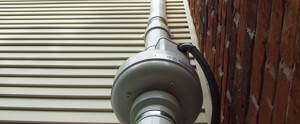RADON Facts Not Fear
Radon: Facts Not Fear
By: Cherie Summa, P.E.
St. Louis Radon Test and Mitigation
Fact: Radon is a colorless, odorless gas. You can’t see it, taste it or smell it, but it can be present at dangerous levels in your home. It is radioactive. It is a carcinogen that comes from the breakdown of uranium in rocks and soil underneath your home. It enters buildings through cracks and other openings in the foundation and becomes trapped indoors.
Fact: The EPA lists radon as the second leading cause of lung cancer and the number one cause of lung cancer among non-smokers, estimating it is responsible for about 20,000 lung cancer deaths every year.
Fact: Radon induced lung cancer is preventable.
Fact: Indoor radon can be controlled and managed with proven, cost-effective radon mitigation techniques performed by a certified radon mitigation contractor.
Fact: The Surgeon General recommends ALL homes get tested.
Fact: The only way to know if you have radon is to test.
Fact: 1 in 4 homes in Missouri have elevated levels of radon.
Face: 40% of homes in Illinois have elevated levels of radon.
Fact: You should test for radon every 2 years according to the EPA.
Fact: Radon levels can be high in houses, apartments, condominiums and commercial buildings.
Fact: If you smoke and are exposed to high levels of radon it increases your risk of lung cancer by 10 to 20 times.
Fact: More non-smoking women die of lung cancer than breast cancer.
Fact: 1 in 5 women and 1 in 12 men diagnosed with lung cancer have never smoked.
Fact: Due to differences in lung shape and size and faster respiration rates, children receive higher estimated radiation doses than do adults. These differences place children at greater radon-exposure health risk than adults.
Fact: The EPA suggests fixing your home if your radon levels are 4 pCi/L or higher. 4pCi/L is equivalent to smoking 8 cigarettes a day.
Fact: Radon systems improve the overall air quality in the home because they pull other soil gases from underneath the slab (methane, gasoline, chemical runoff) too. In addition, a radon system removes about a gallon of water from underneath the slab, keeping your basement drier.
St. Louis Radon welcomes the opportunity to speak at office, HOA and PTA meetings. We can be reached at 636-200-2875 or admin@stlradon.com.




